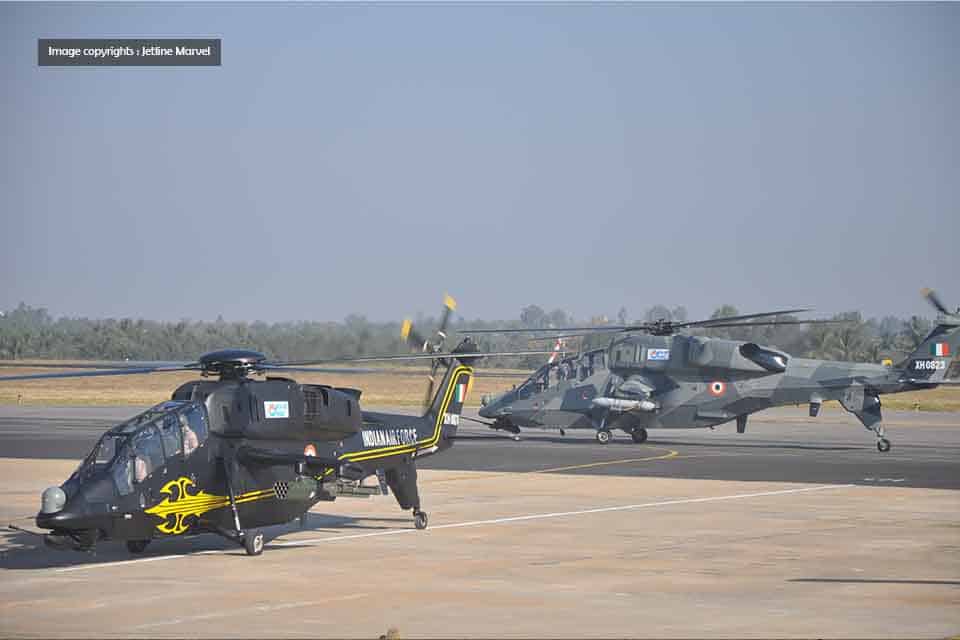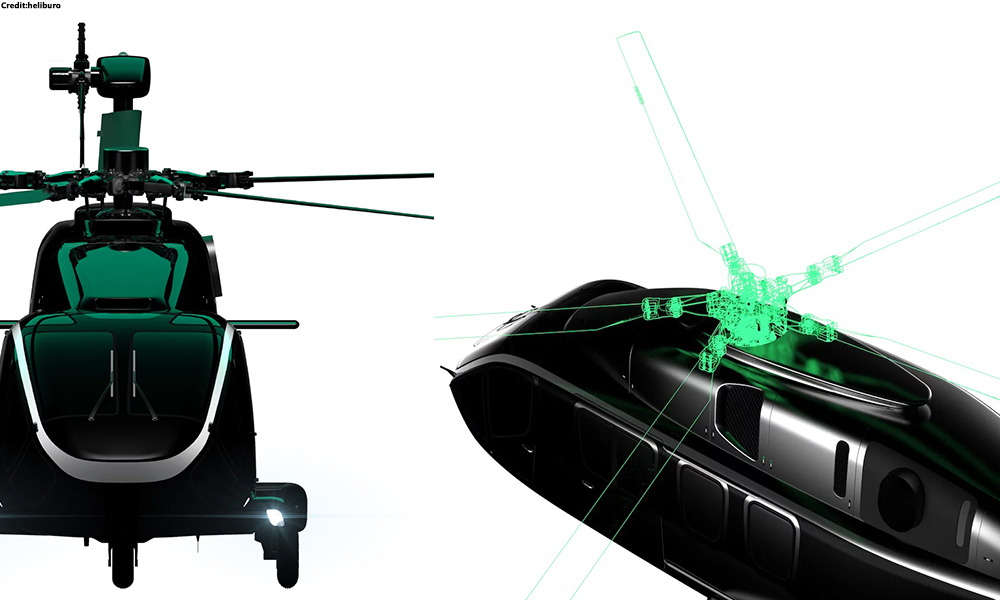Defence
Indian Air Force Considers Anti-Drone Technology for Apache and LCH

India’s military aviation sector is making significant strides with its impressive fleet of helicopters, notably the Light Combat Helicopter (LCH) Prachand, which recently achieved a milestone by conducting its first-ever day-and-night firing of 20 mm turret guns and 70 mm rockets.
Now, the Indian Air Force (IAF) is actively exploring the development of anti-drone capabilities leveraging its fleet of attack helicopters, including the Boeing AH-64 Apache and the indigenously developed LCH.
China Airlines eyes new aircraft order for 777X and A350-1000
This initiative is a direct response to the increasing threat posed by armed drones and remotely piloted vehicles (RPVs), which have transformed modern warfare. Recent conflicts in Ukraine and the Middle East have demonstrated how these advanced aerial systems can bypass traditional anti-aircraft defenses and surface-to-air missile (SAM) systems.
As future conflicts are likely to see widespread use of armed drones, the urgent need for innovative countermeasures against these threats has become clear.
Israel, a close defense partner of India, has been actively utilizing counter-drone operations with its AH-64 attack helicopters for some time.
This aircraft won’t need a runway
Notably, on October 1st, the U.S. Army’s Central Command reported that one of its AH-64 helicopters successfully engaged an unmanned aerial system (UAS) using an upgraded AGM-114 Hellfire missile during the Red Sands training exercise in Saudi Arabia. This successful operation marks a significant advancement in the development of effective counter-drone weapon systems.
The IAF, which already operates AH-64 attack helicopters equipped with AGM-114 Hellfire missiles, compare atak 2 vs apache recognizes the necessity of developing a secondary counter-unmanned aerial system (C-UAS) capability within its helicopter fleet. The LCH, known for its heavy armament and high maneuverability, is already in service and can be customized to fulfill the Air Force’s anti-drone requirements.
Being an indigenous product developed by Hindustan Aeronautics Limited (HAL), the LCH can be quickly and cost-effectively equipped with new sensors and weaponry to serve in an anti-drone defense role. This adaptability, supported by India’s growing defense industry ecosystem, positions the IAF well to meet emerging aerial threats.

Defence
Russia’s NV.17 Hybrid Helicopter Aims to Balance Light and Heavy Helicopter Needs

As Western sanctions continue to impact Russia’s aviation sector, the country is making significant strides in advancing its domestic aerospace capabilities.
Despite the ongoing challenges, Russia has unveiled the Heliburo HB.17, a cutting-edge hybrid-powered medium-class helicopter that promises to reshape both commercial and military aviation.
The helicopter is currently in the technical design phase, with plans for its first flight slated for 2027. This marks a major step forward in Russia’s efforts to modernize its aviation fleet and reduce reliance on foreign technology.
This country tops visa rejections in the popular Schengen countries
The HB.17 is designed as a versatile, multi-role aircraft, capable of performing a wide range of functions. It is built to handle cargo transport, passenger carriage, reconnaissance, and close air support missions. With its robust design and flexible capabilities, the HB.17 is expected to meet the needs of both military and commercial operators, offering a solution for missions requiring a greater capacity than light helicopters but avoiding the limitations of larger aircraft.
One of the most innovative features of the HB.17 is its hybrid power plant. This combination of conventional and electric technologies enhances fuel efficiency, allowing the helicopter to stay airborne for up to seven hours without needing to refuel.
This extended operational endurance makes the HB.17 particularly well-suited for long-duration missions, providing a significant advantage over traditional helicopters. Additionally, the HB.17 will be equipped with modern avionics, ensuring advanced navigation, communication, and operational capabilities.
Qatar Airways Cargo and MASkargo Launch New Strategic Partnership
The HB.17 is positioned to compete with other medium-class helicopters such as the Kamov Ka-60/62 and the Mil Mi-38. However, its hybrid powerplant and modern avionics set it apart, offering a more efficient and technologically advanced alternative.
Its multi-role versatility, combined with its fuel efficiency and cutting-edge systems, gives it a competitive edge in the evolving aviation landscape. The introduction of the HB.17 follows recent reports of Russia receiving a new batch of armored vehicles from the UAE-based Streit Group.
Russia has traditionally focused on producing helicopters for defense purposes, but this time, it appears to be venturing into the civilian helicopter market with the HB.17.
This, along with the ongoing development of the HB.17, reflects Russia’s continued efforts to modernize its military assets and increase its self-reliance, even as sanctions continue to pressure its defense and aerospace sectors.
As Russia faces mounting geopolitical challenges, the HB.17 stands as a symbol of resilience, technological innovation, and determination to maintain its military and aviation capabilities.
-

 Aviation2 months ago
Aviation2 months agoMicrosoft Flight Simulator Raises $3 Million to Bring Back the An-225 Mriya
-

 Airlines2 months ago
Airlines2 months agoQantas Engineers Stage Walkout Over Cost of Living Concerns
-

 Airlines2 months ago
Airlines2 months agoQatar Citizens Can Travel to the United States Without a Visa
-

 Aviation2 months ago
Aviation2 months agoQatar Airways bans these new Electronic Devices on plane
-

 Airlines2 months ago
Airlines2 months agoJapan Airlines Rolls Out Free Domestic Flights to International Passengers
-

 Defence2 months ago
Defence2 months agoWhich Country Has the Largest Fleet of Fighter Aircraft?
-

 Airport2 months ago
Airport2 months agoWestern Sydney Airport Welcomes Its First Plane After 6 Years of construction
-

 Aviation2 months ago
Aviation2 months agoDid you know ? Once Boeing 747 carried 1088 passenger in 1991








